It’s a shame I haven’t posted under the new Worldmappin brand! High time to do so! Let me take you to the small South Bohemian town of Český Krumlov, which finds its place on many travelers’ itineraries due to its Baroque houses and its magnificent castle, which showcases multiple architectural styles (Gothic, Renaissance, and Baroque, to be precise). The castle and the old town were declared a UNESCO World Heritage site in 1992. Maybe the trademark shot below will ring a bell for you.
Worldmappin je na světě už nějaký ten týden, a já do něj ještě nepřispěl žádným cestovatelským článkem. A tak je nejvyšší čas to napravit. Tentokrát se vydáme do jižních Čech, tedy do Buciho teritoria. Český Krumlov asi není českému čtenáři třeba představovat, byl tam snad každý. Když ně jako turista, kterého by přilákaly památky, tak jako vodák nebo cyklista. Ostatně, úsek Vltavy z Vyššího Brodu do Krumlova je notoricky profláknutý, v létě je tam lidí jako na Václaváku.

Český Krumlov is also a popular destination among Czechs, even though we happen to appear there rather than being particularly drawn to the place. The river below the castle is the Vltava, which flows through Prague some 200 kilometers further. The stretch from Vyšší Brod to Český Krumlov is a favored canoeing hotspot – anyone who has never sailed it is hardly a true Czech. That’s not much of an exaggeration; there are thousands of boats every summer day, and the sailors quench their thirst in floating bars (yes, floating bars!), at multiple kiosks and camps along the stream, or just from their own supplies. I’ve even seen boats with a keg on board. Anyway, I stopped by in February, so there were no canoes.

The funniest part about canoeing is the weirs, like this one. It’s a high one, but the floating chamber makes it navigable. However, when we sailed it two years ago, it was broken, and the reverse wave at its foot flipped every boat that wasn’t a raft. We flipped too, obviously, and it was the first time it happened to my girlfriend – canoeing is not that common in Spain. Observing the boats from the castle is fun even if the weir has already been repaired by now – make sure you come when the weather is nice.
Jez, který je vidět na fotce, měl pod propustí, kterou se sjíždí, dva roky zpátky protivlnu, prý se tam uvolnily nějaké kameny či co. Kdokoli ho sjížděl na něčem méně bytelném než raft, se cvakl. My taky - pro T. to bylo poprvé. Ve Španělsku se na vodu tak jako u nás nejezdí, vodním sportům se věnují hlavně v moři. Jestli ten jez není opravený, sledovat, jak se tam cvakne jedna posádka za druhou, může být docela legrace. Třeba z té restaurace na břehu.

I didn’t approach the castle from the riverbank, though. To avoid the crowds (well, there were not many people in February), I took the less-known path by the stables and Baroque Theatre. It may look less appealing at first glance but don’t be misled by initial appearances.
Já se na hrad nicméně dostal zadem, kolem stájí a barokního divadla. V sezoně by to byla o poznání příjemnější varianta než cesta, kterou se nahoru šinou davy, ale v únoru to bylo celkem jedno.

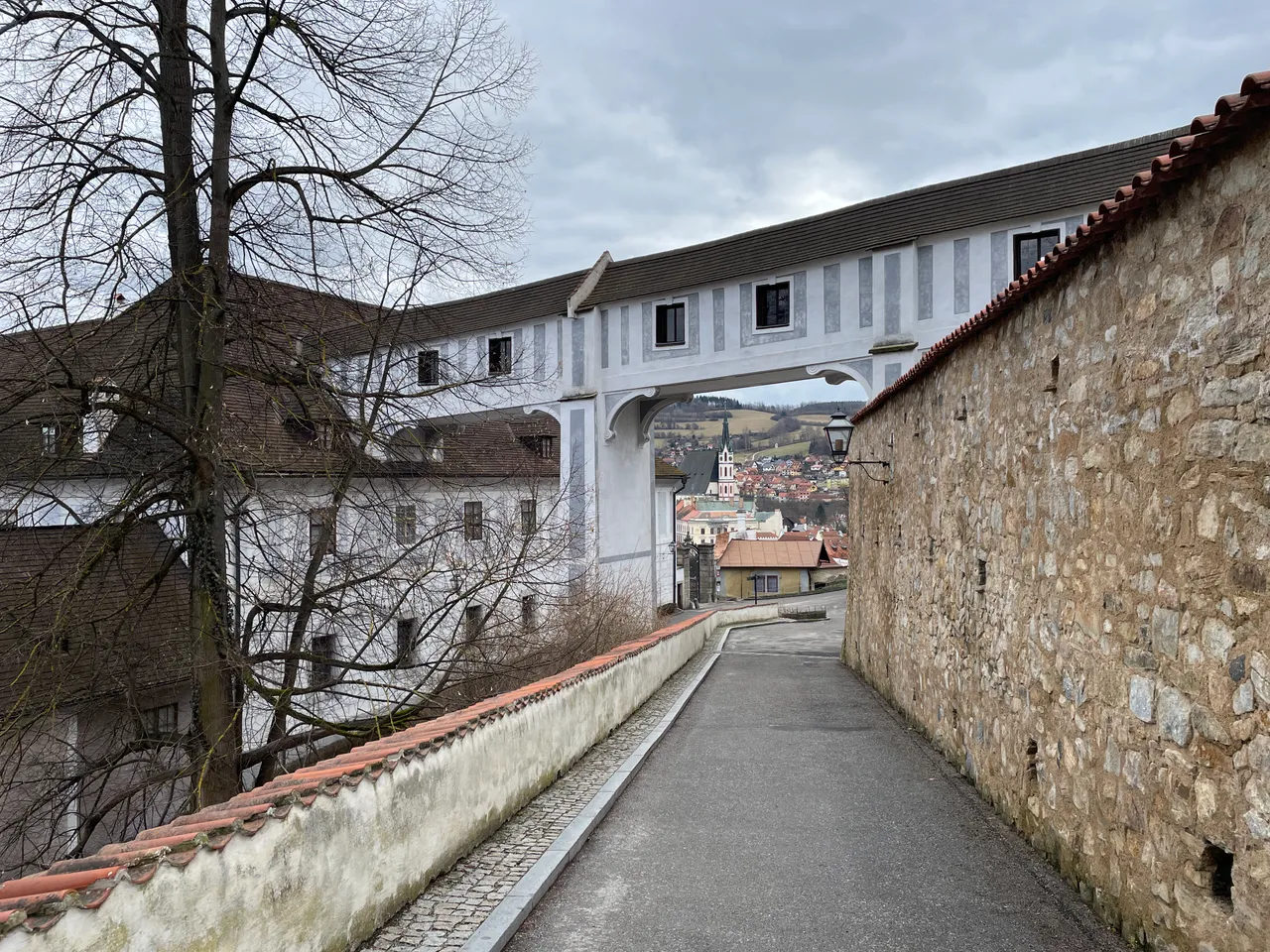
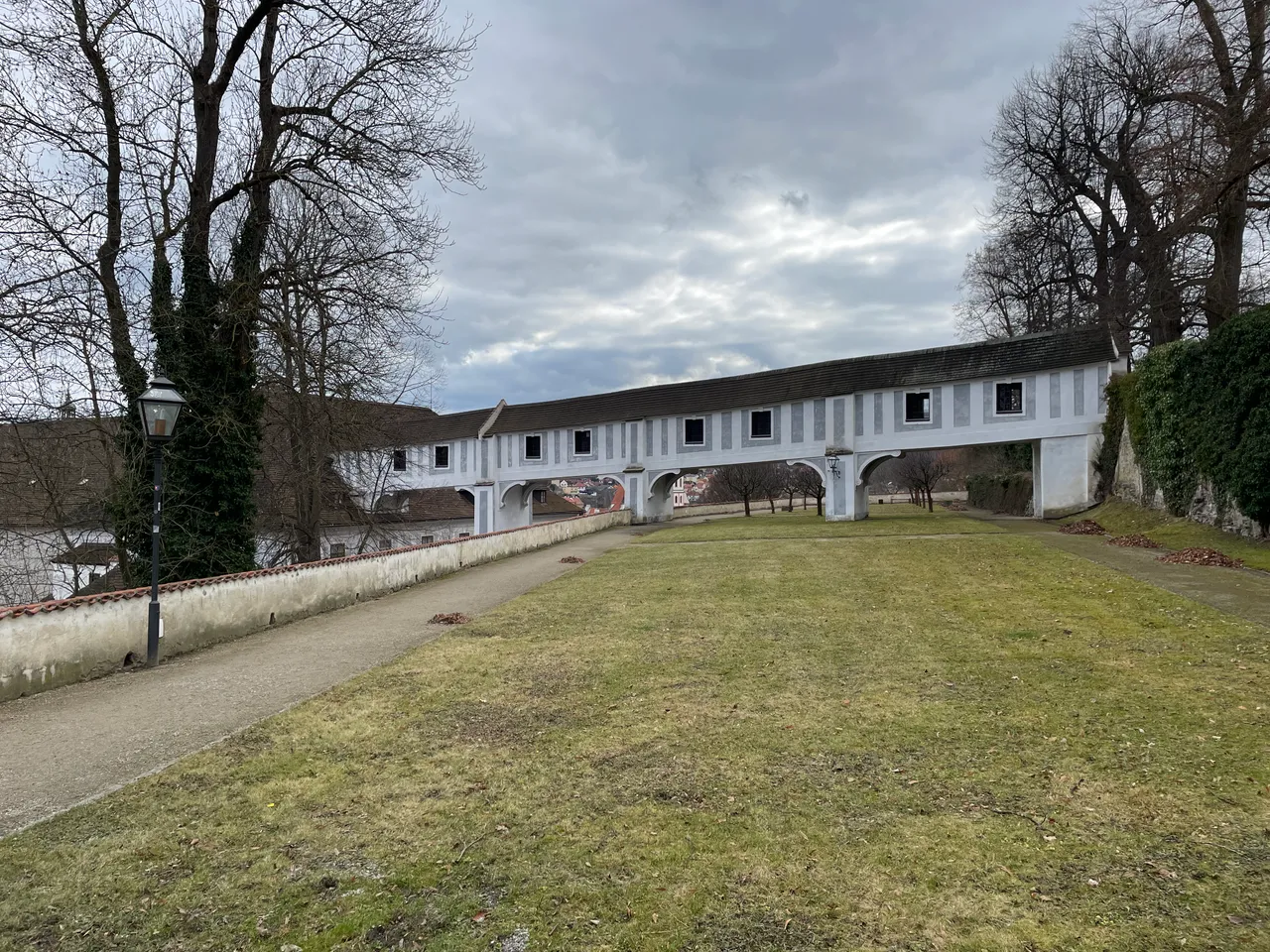
The stables still serve their original purpose, or at least the pasture with horses suggests so.
Stáje zřejmě stále ještě slouží svému původnímu účelu, hned za nimi se totiž pásli koně.
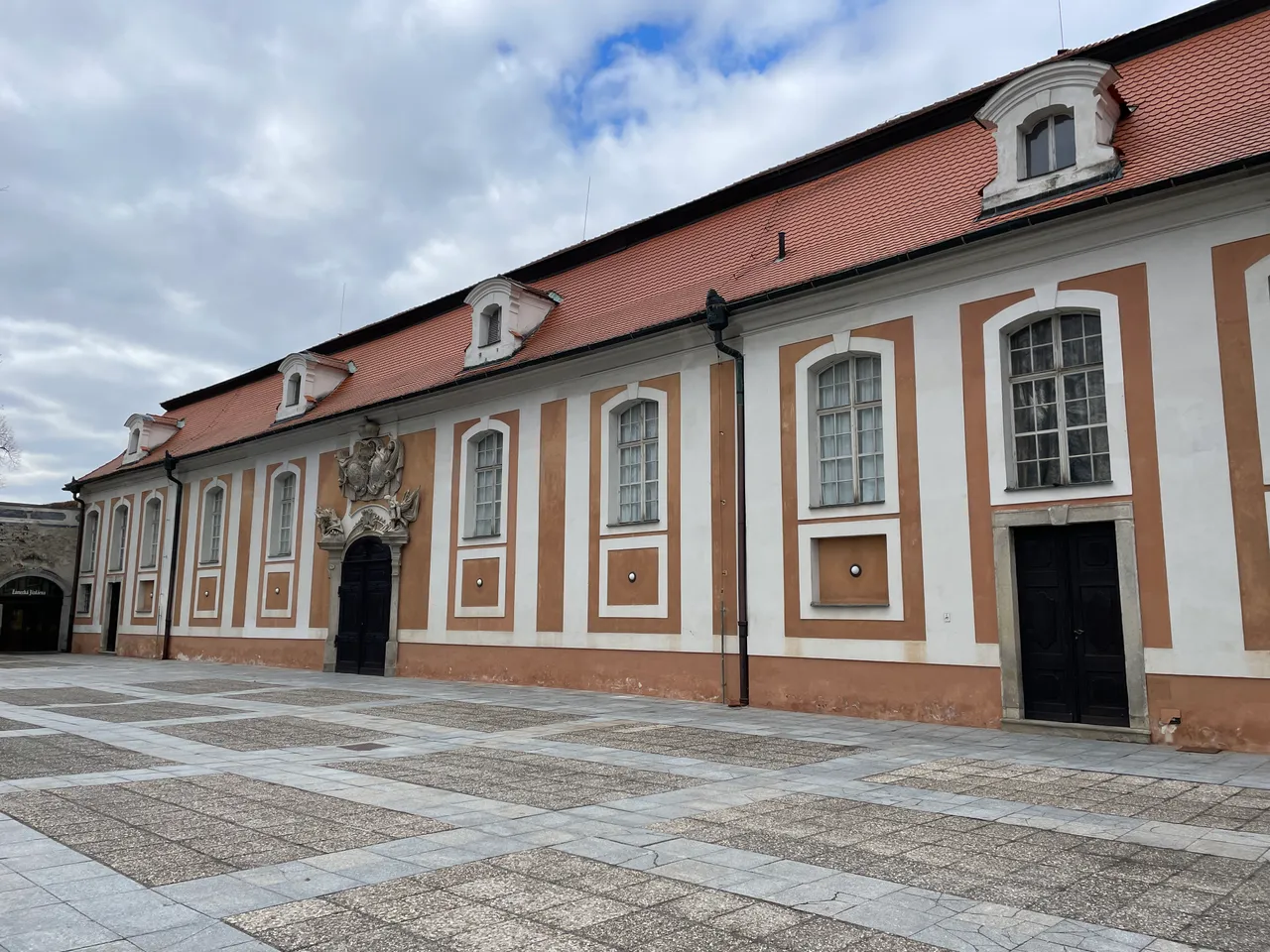


One last glance from a viewpoint at the gardens next to the theatre, and let’s enter the castle complex.
Ještě jeden rychlý pohled ze zámeckých zahrad a hurá na hrad.

The first thing you stumble upon is the unique Cloak Bridge. It spans over the former moat and connects the Upper Castle with the Baroque Theatre, which you might have noticed in the pictures above. The late 17th-century bridge now has a Baroque façade and boasts statues of saints. The Cloak Bridge is a multi-story structure, though the upper floors are not commonly accessible.
To první, co nejde přehlédnout, je plášťový most. Ten spojuje Horní hrad s Barokním divadlem, a zajímavý je mimo jiné tím, že je několikaposchoďový. Nevzpomínám si, že bych viděl jiný podobný most ze 17. století, pokud o nějakém víte, směle o něm napište článek pro Worldmappin. Veřejně přístupné je spodní patro s barokními sochami, respektive kopiemi těch původních soch.
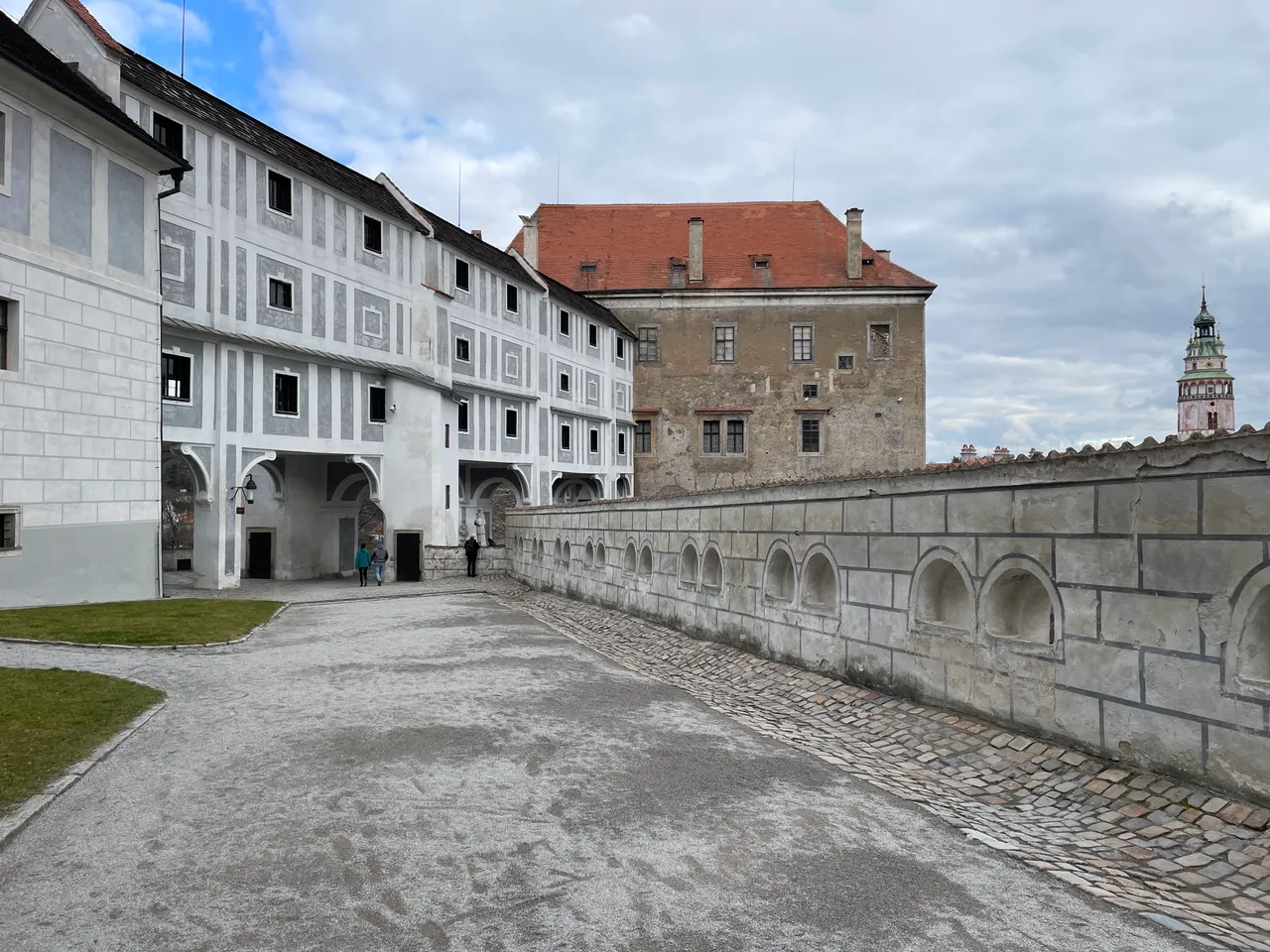
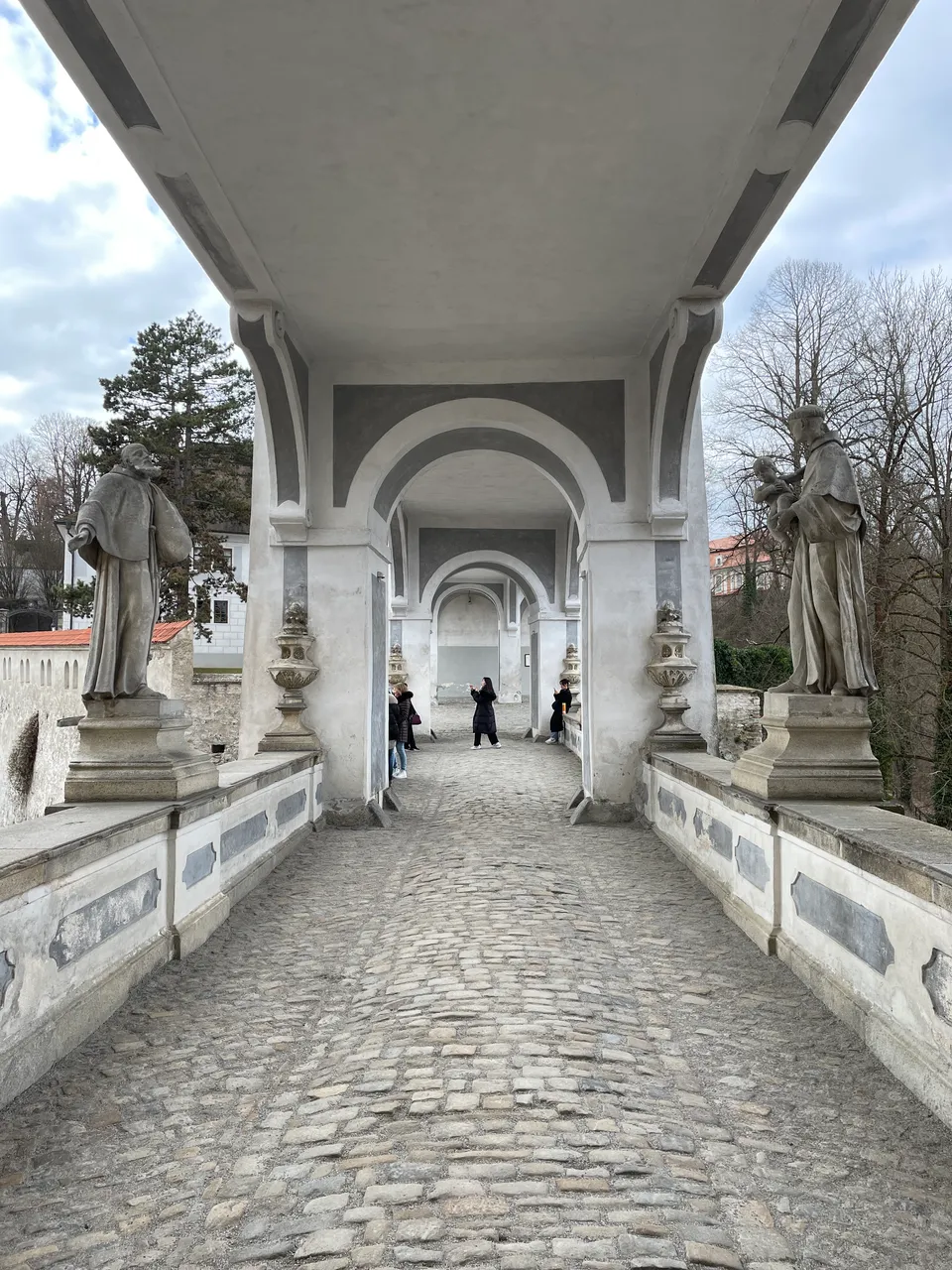
The Upper Castle is the more recent part of the vast complex, which was established by the House of Rosenberg in the mid-13th century. The Rosenbergs owned the manor until the early 17th century. The first thing that catches your eye there is younger, though – the 16th-century Renaissance sgraffito decorations on the courtyard façades give the entire place a fairy-taly vibe.
Horní hrad je ta mladší část celého komplexu, který je původně z poloviny 13. století. Počátky místního opevnění se pojí s rodem Rožmberků, kteří panství vlastnili až do počátku 17. století. Bohatá sgrafitová výzdoba na obou nádvořích Horního hradu je pak ze 16. století. Myslím, že její restaurace se vydařila.


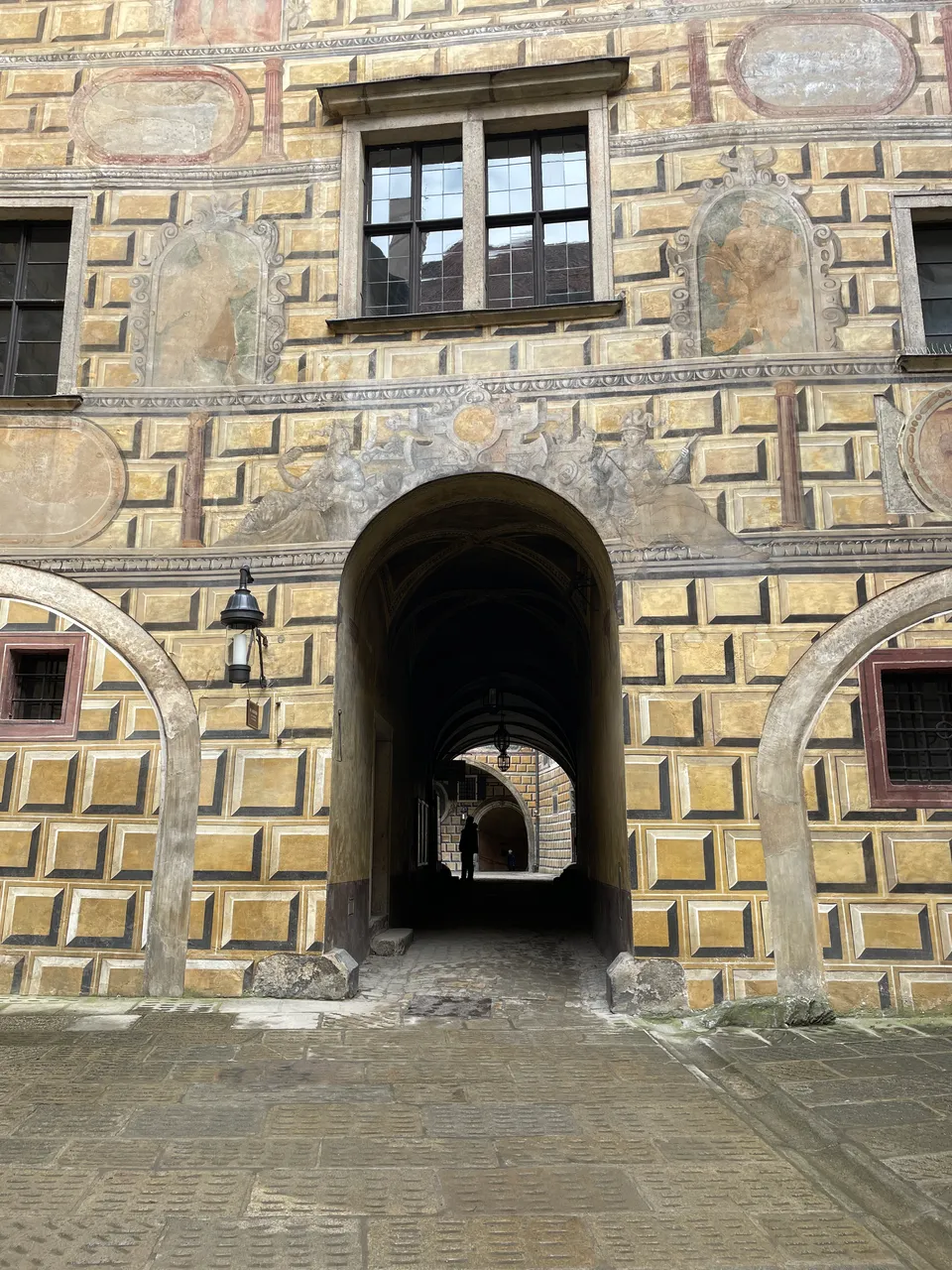


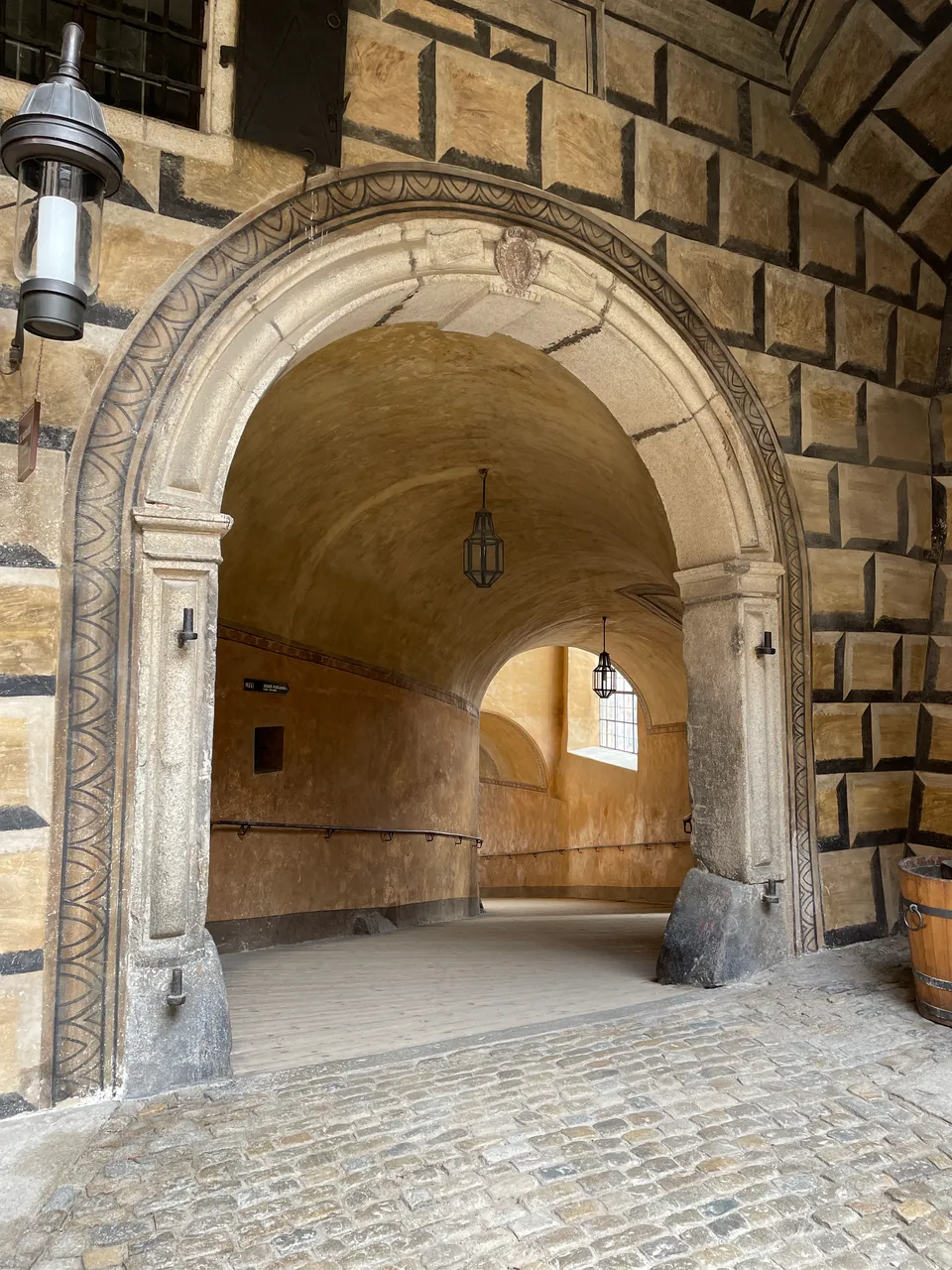
This gate led me into the courtyard of the Lower Castle, the oldest part of the complex, originally a stronghold perched on a rocky headland above the river. Its dominant feature, the 13th-century tower, which we will visit later, has already caught your eye in the opening photos. The Old Burgrave’s House, Mint, and other buildings are from the 16th and 17th centuries.
Touhle branou jsem prošel do Dolního hradu, původně obrané tvrzi na ostrohu na řekou. Dominantu Dolního hradu určitě znáte, i kdybyste v Krumlově v životě nebyli, je to ona ikonická věž. Ostatní budovy, třeba Staré purkrabství, Mincovna nebo věž Máselnice, jsou ze 16. a 17. století.

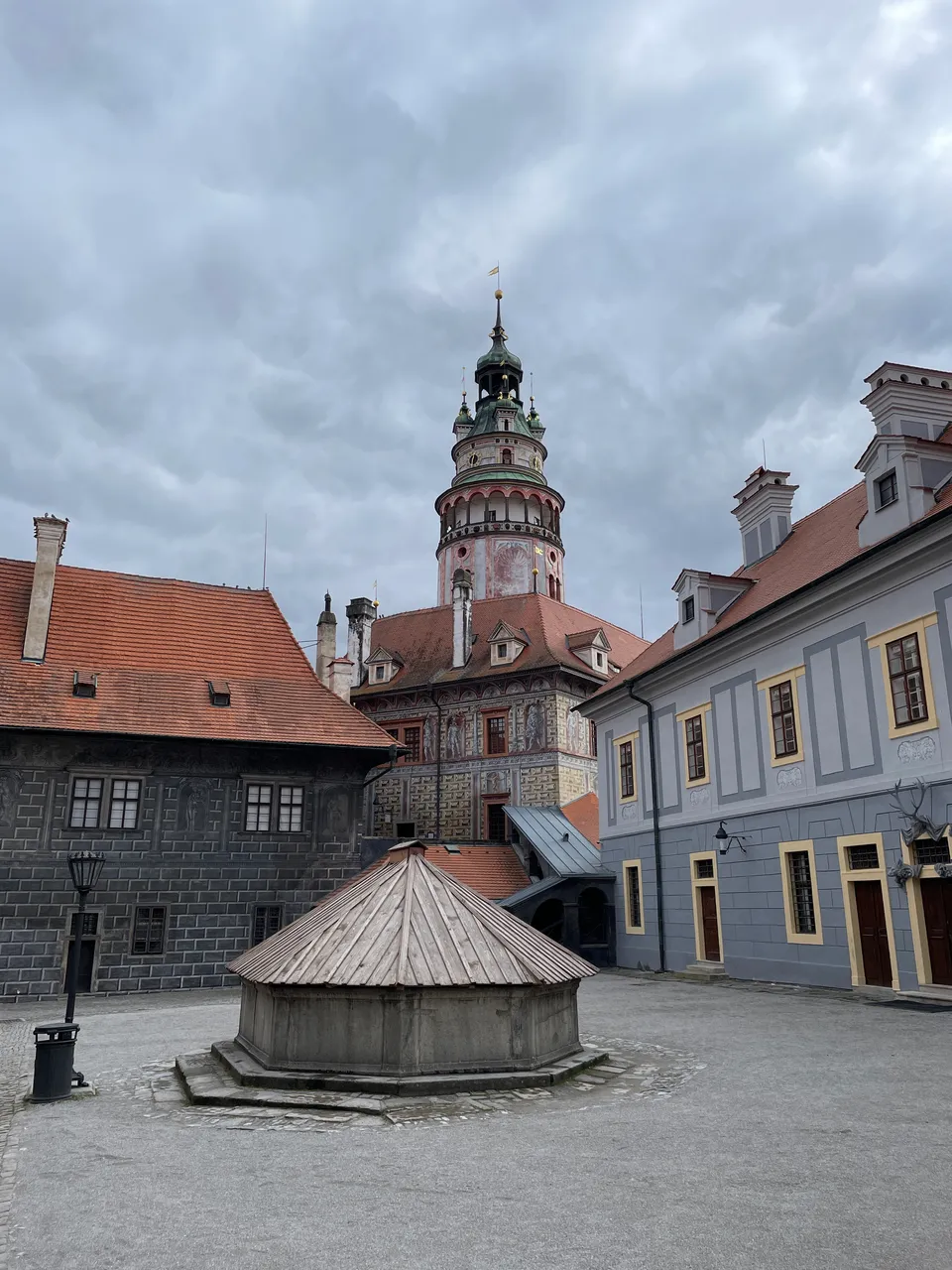

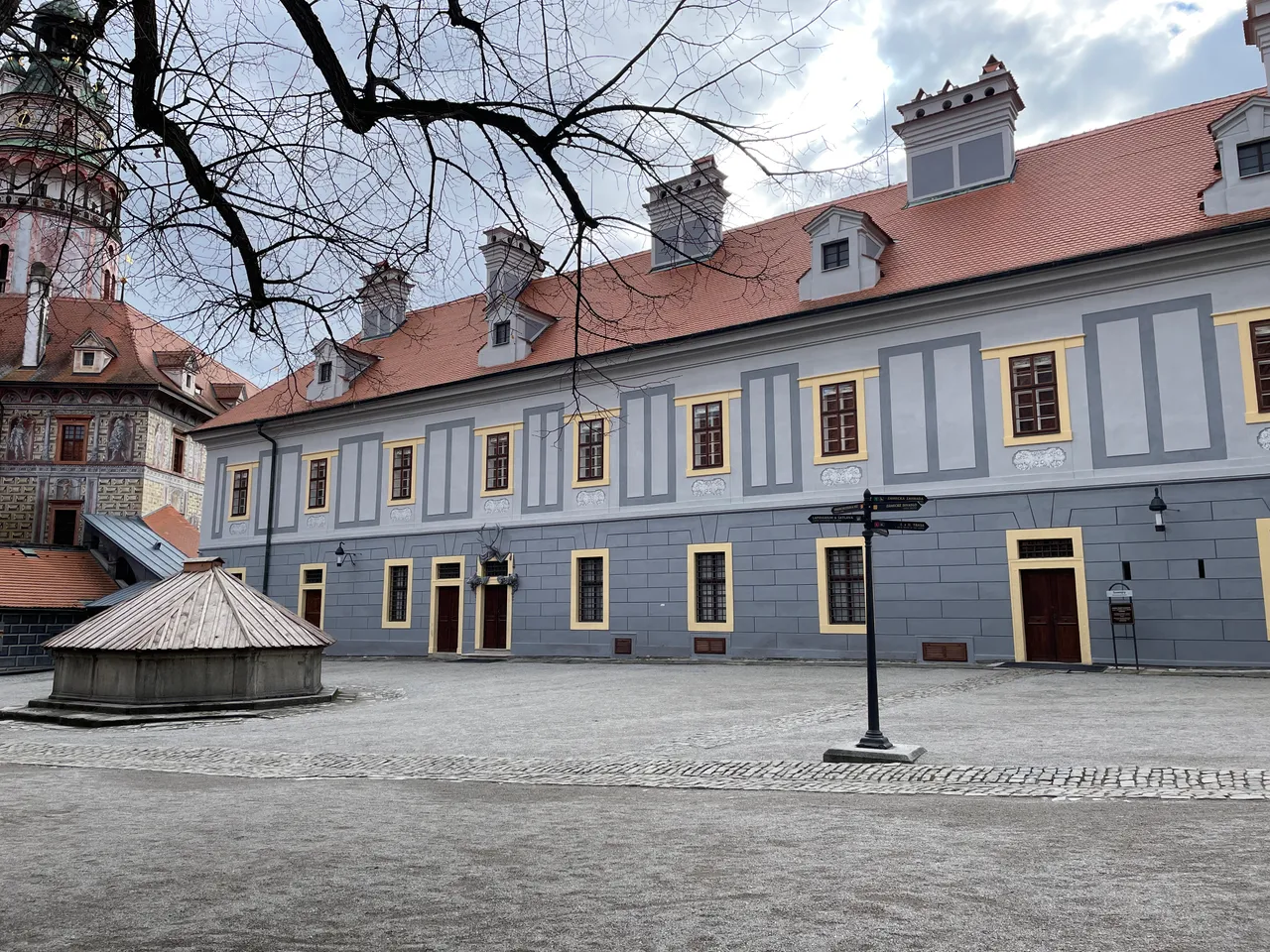

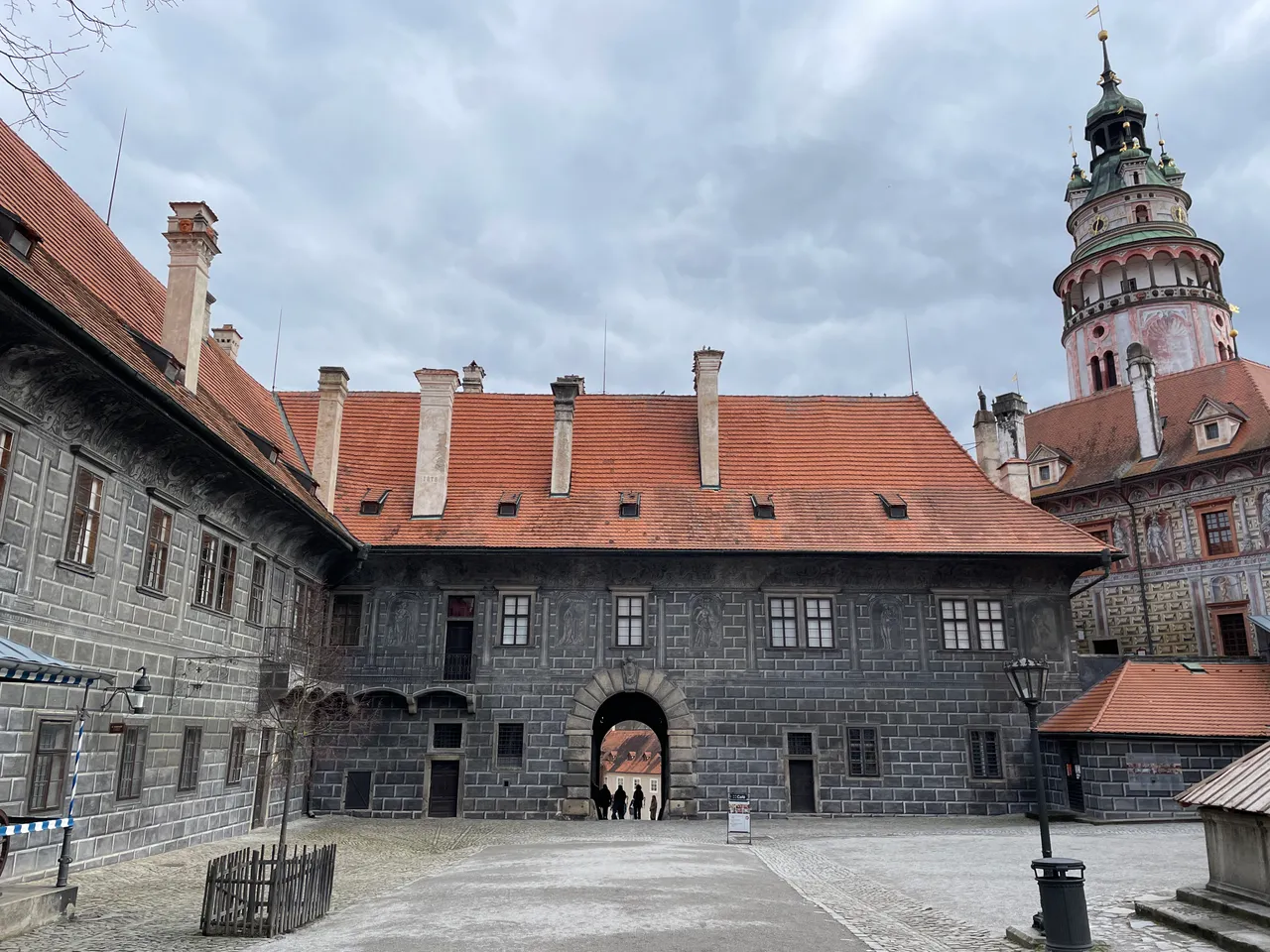
Let’s enter the tower and the museum, which nowadays occupies the castle. The tower is not suitable for people who suffer from claustrophobia.
Věž i interiéry paláce jsou veřejně přístupné, je v nich muzeum. Cesta na věž není nic pro klaustrofobiky.

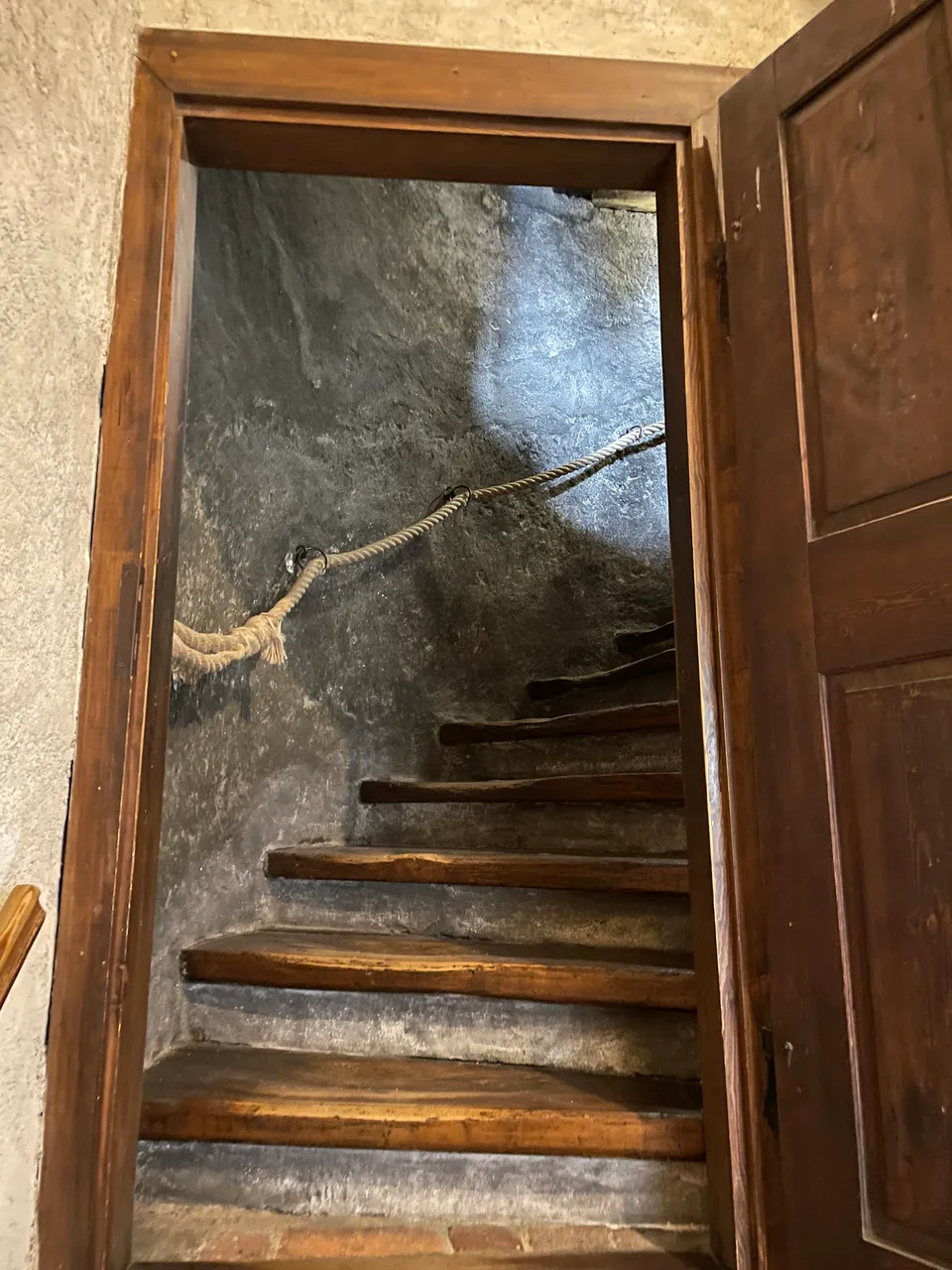

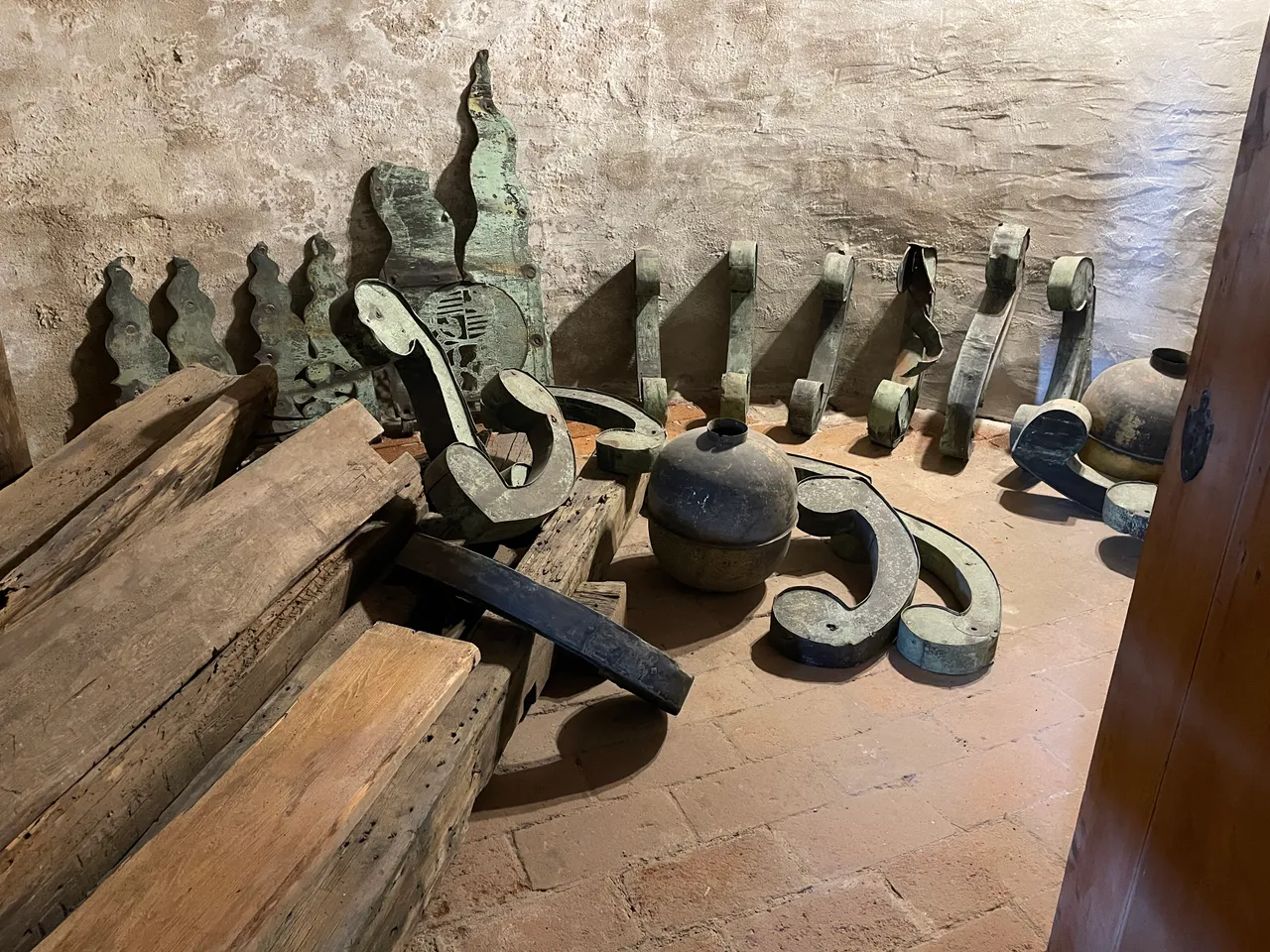

The marvellous views it offers are worth climbing the steep stairs up, though.
Ale když se vyškrábete nahoru, výhledy stojí za to.

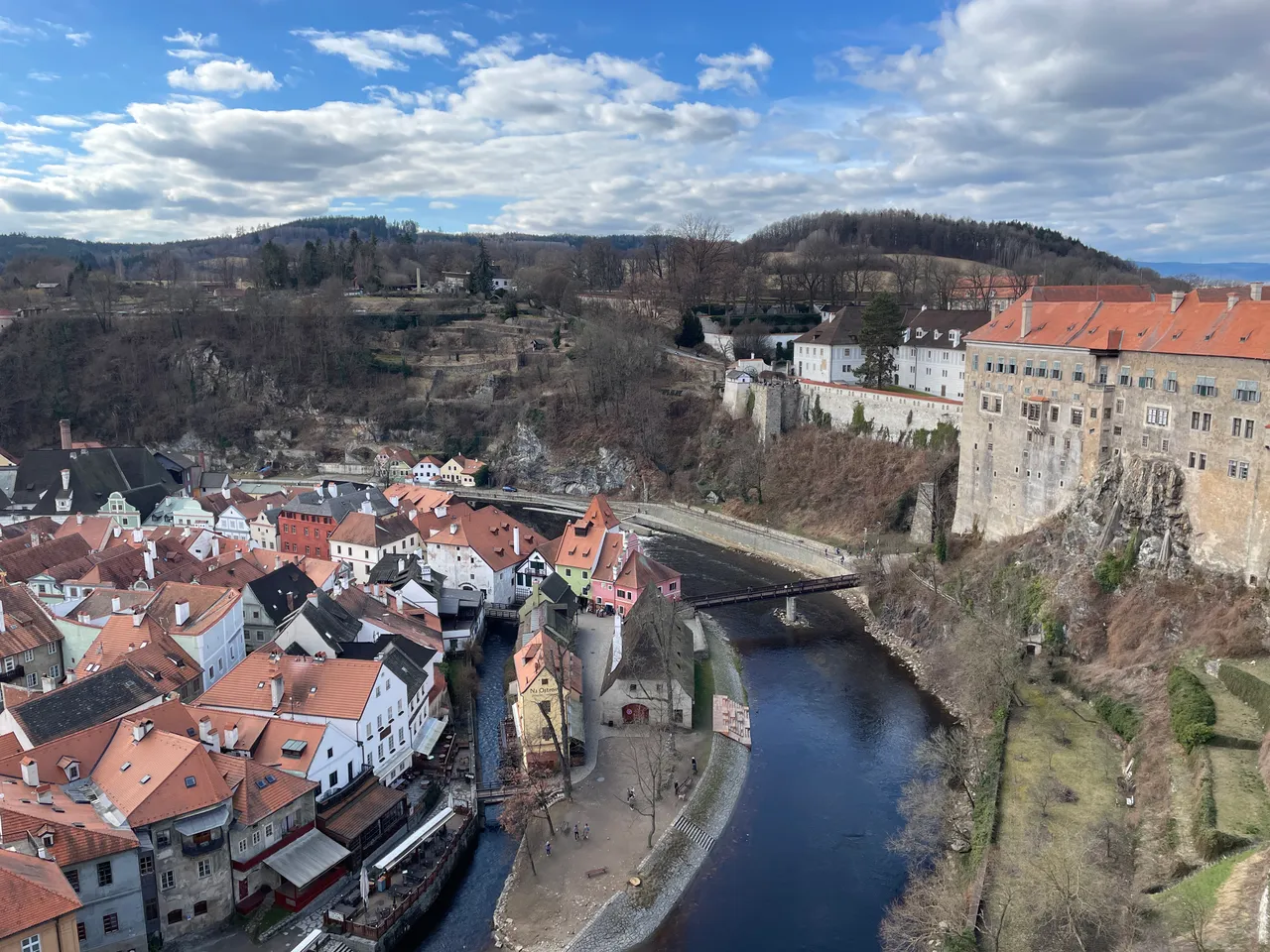

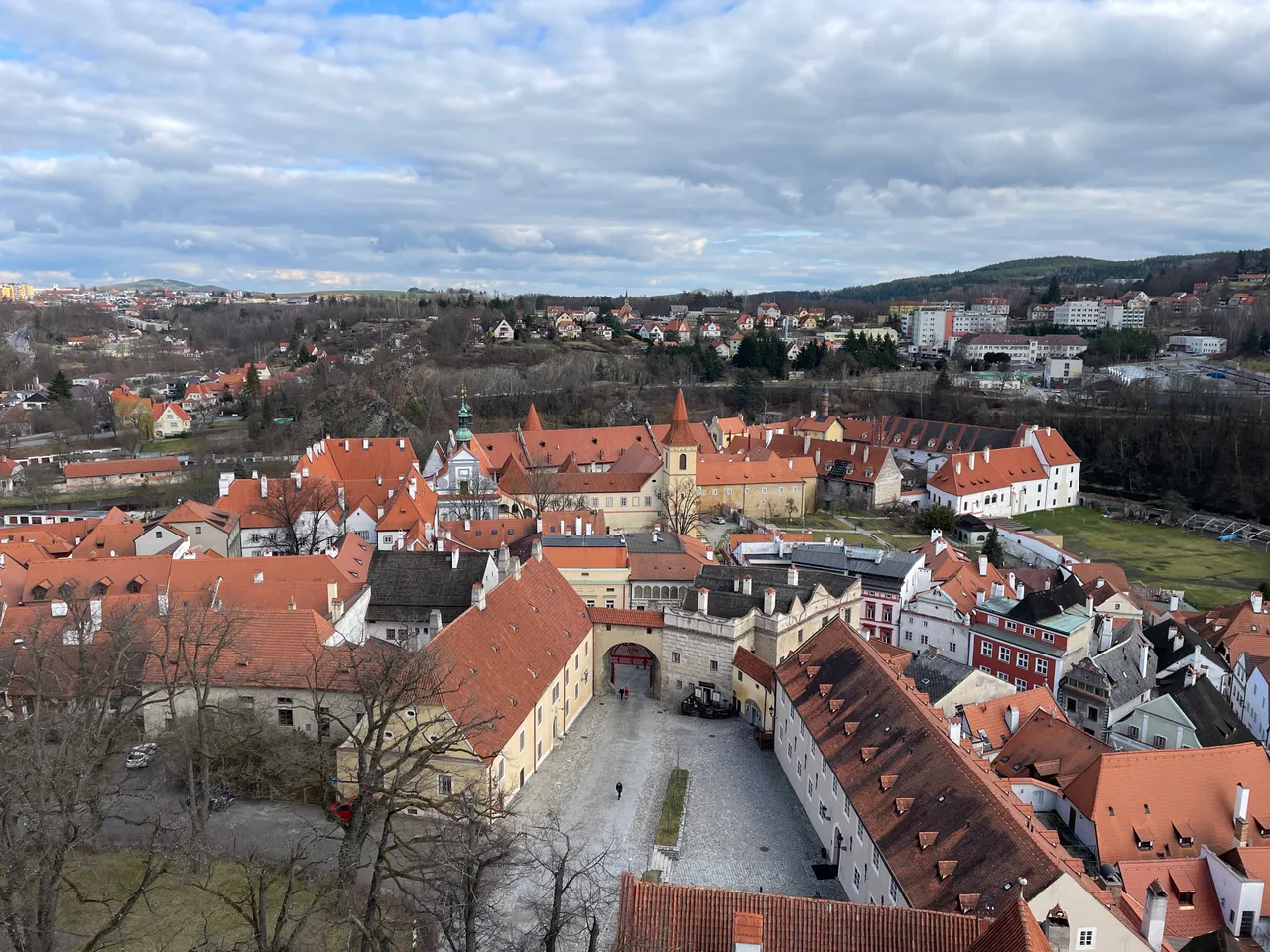
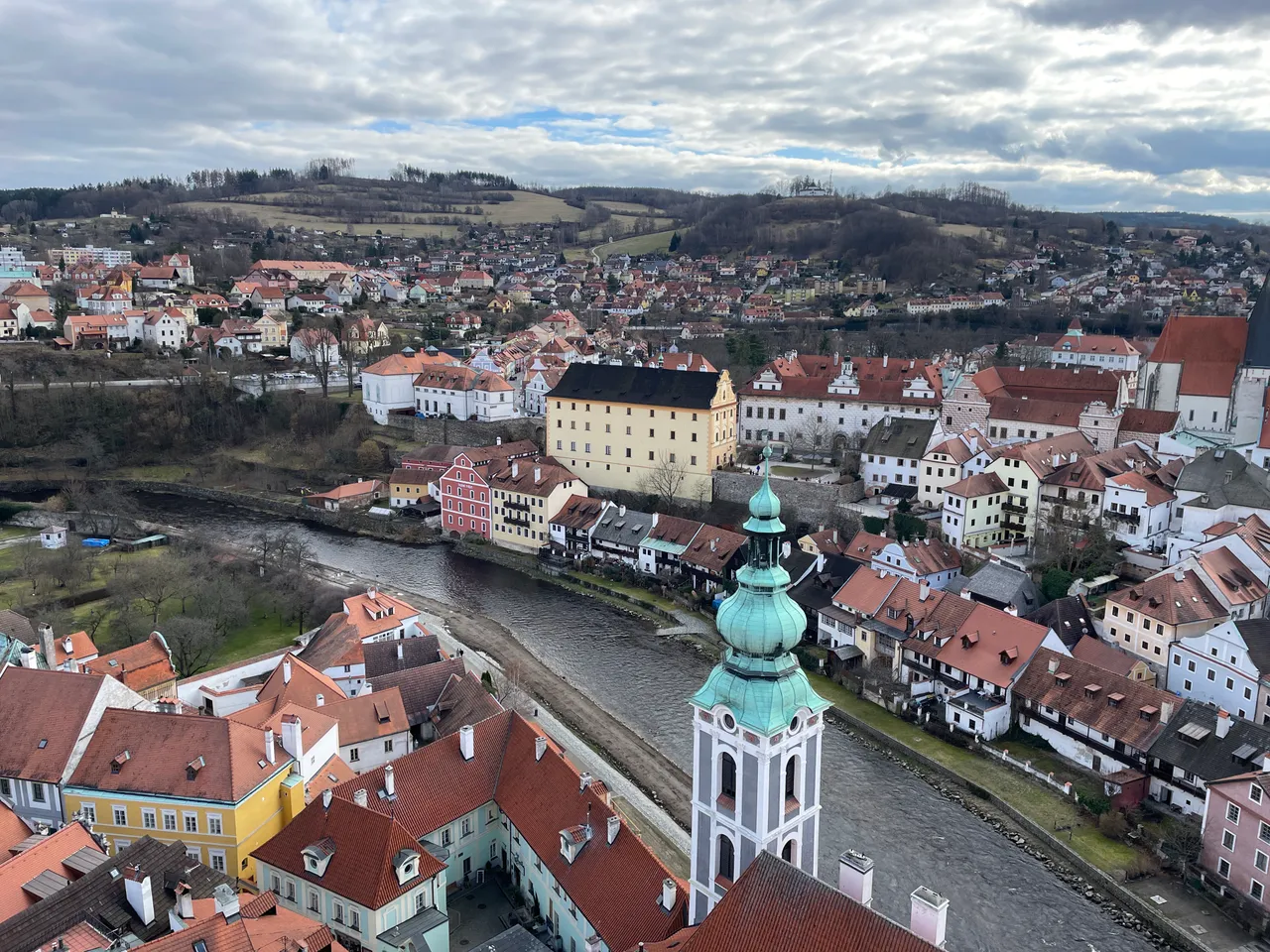
The museum focuses on the history of the castle and its three successive owners: the Rosenbergs, the Eggenbergs, and finally the Schwarzenbergs, who held possession of the castle until it was confiscated by the communists in 1950.
Muzeum se zaměřuje na historii panství a představuje tři šlechtické rody, které se na něm vystřídaly - Rožmberky, Eggenbergy a Schwarzenbergy, kteří o zámek přišli, když byl v roce 1950 znárodněn.



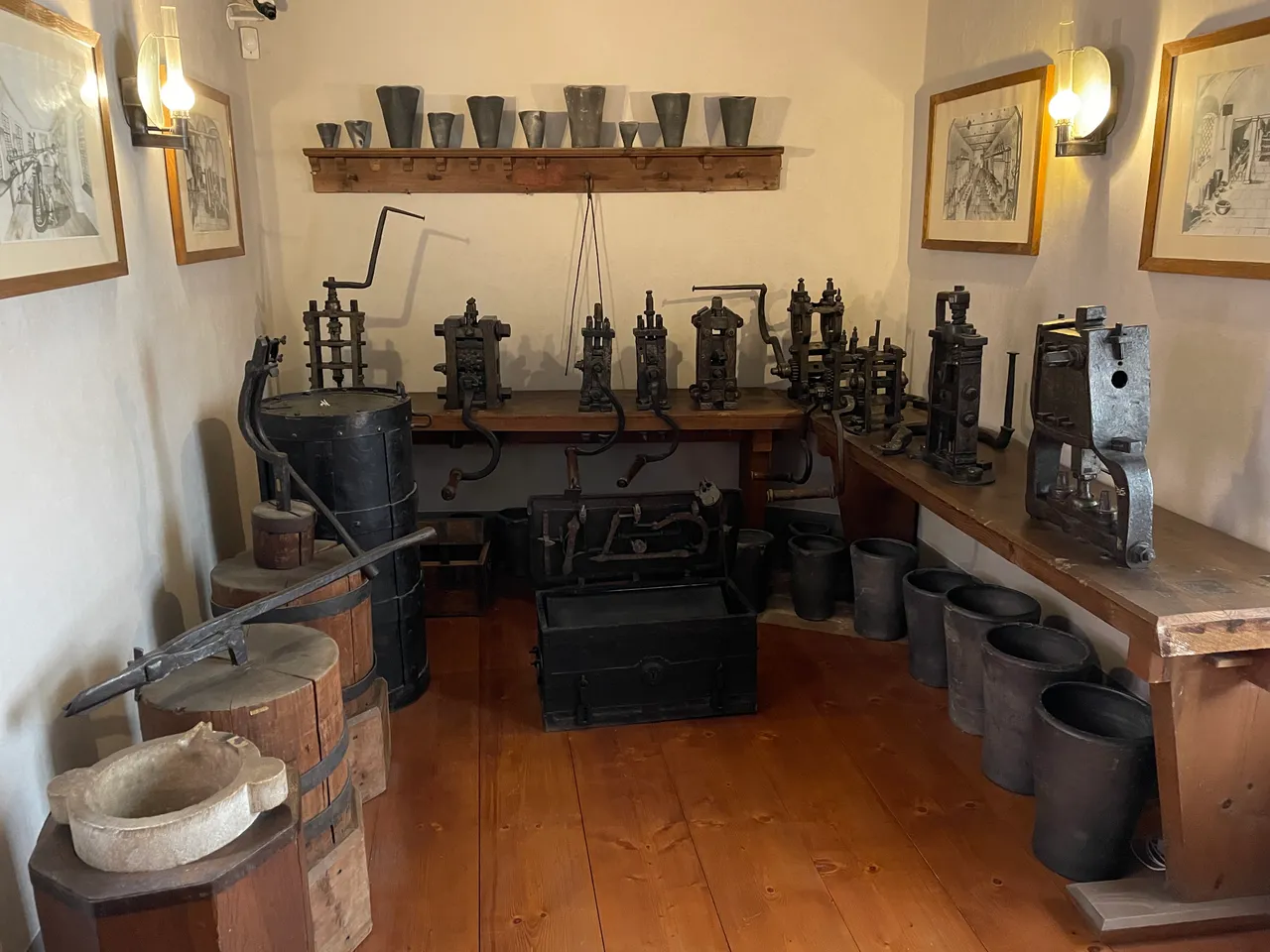
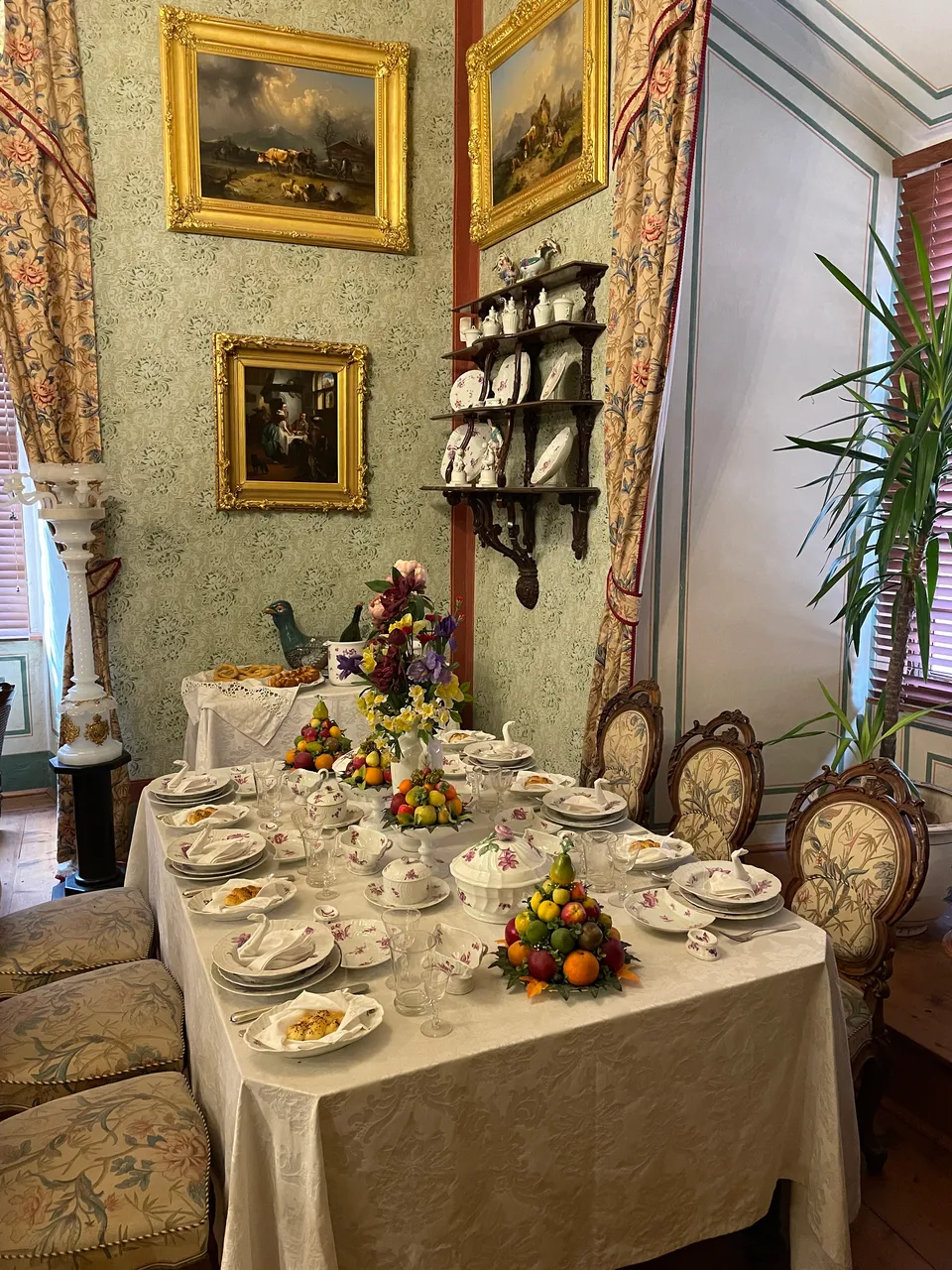
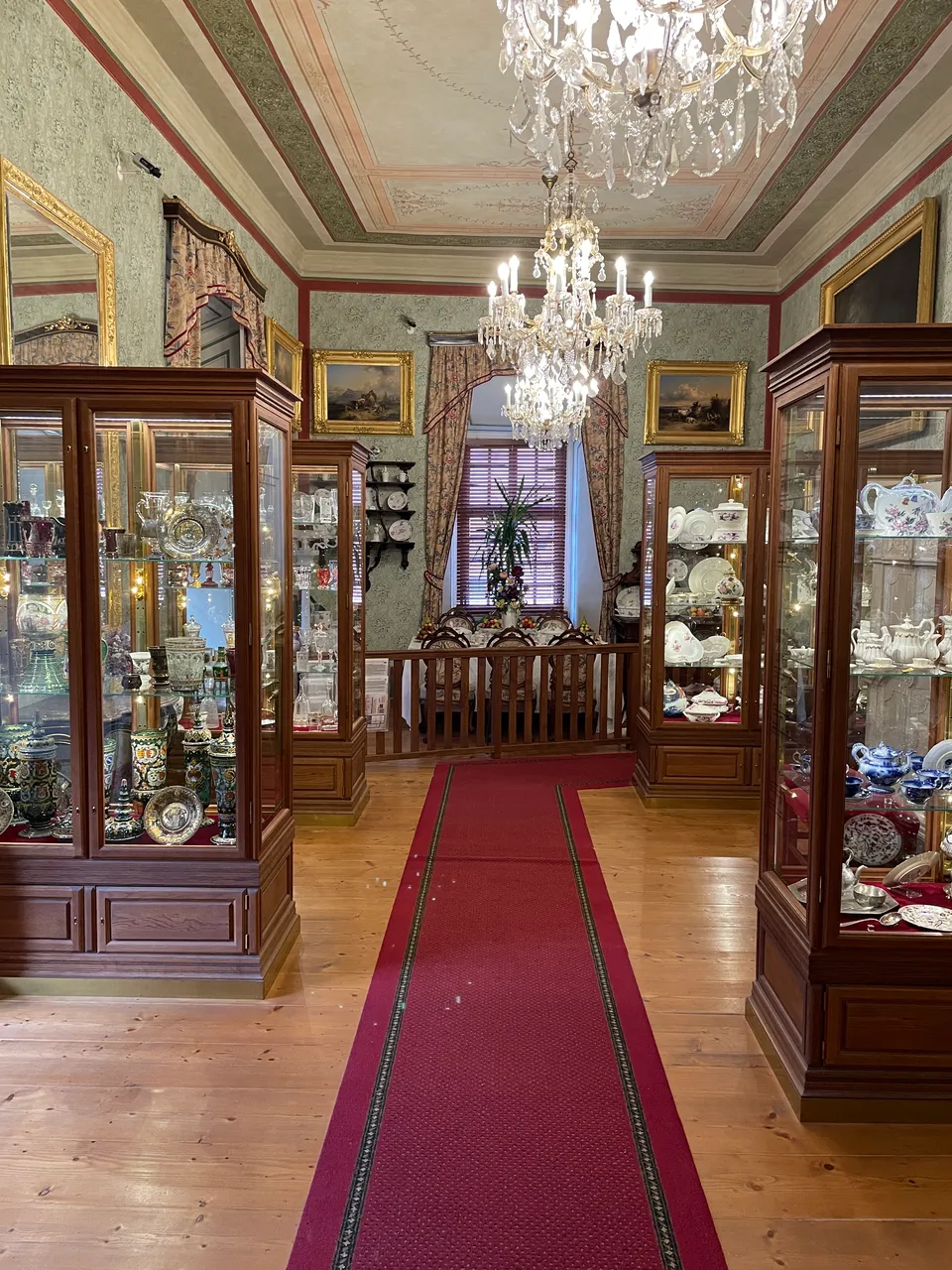
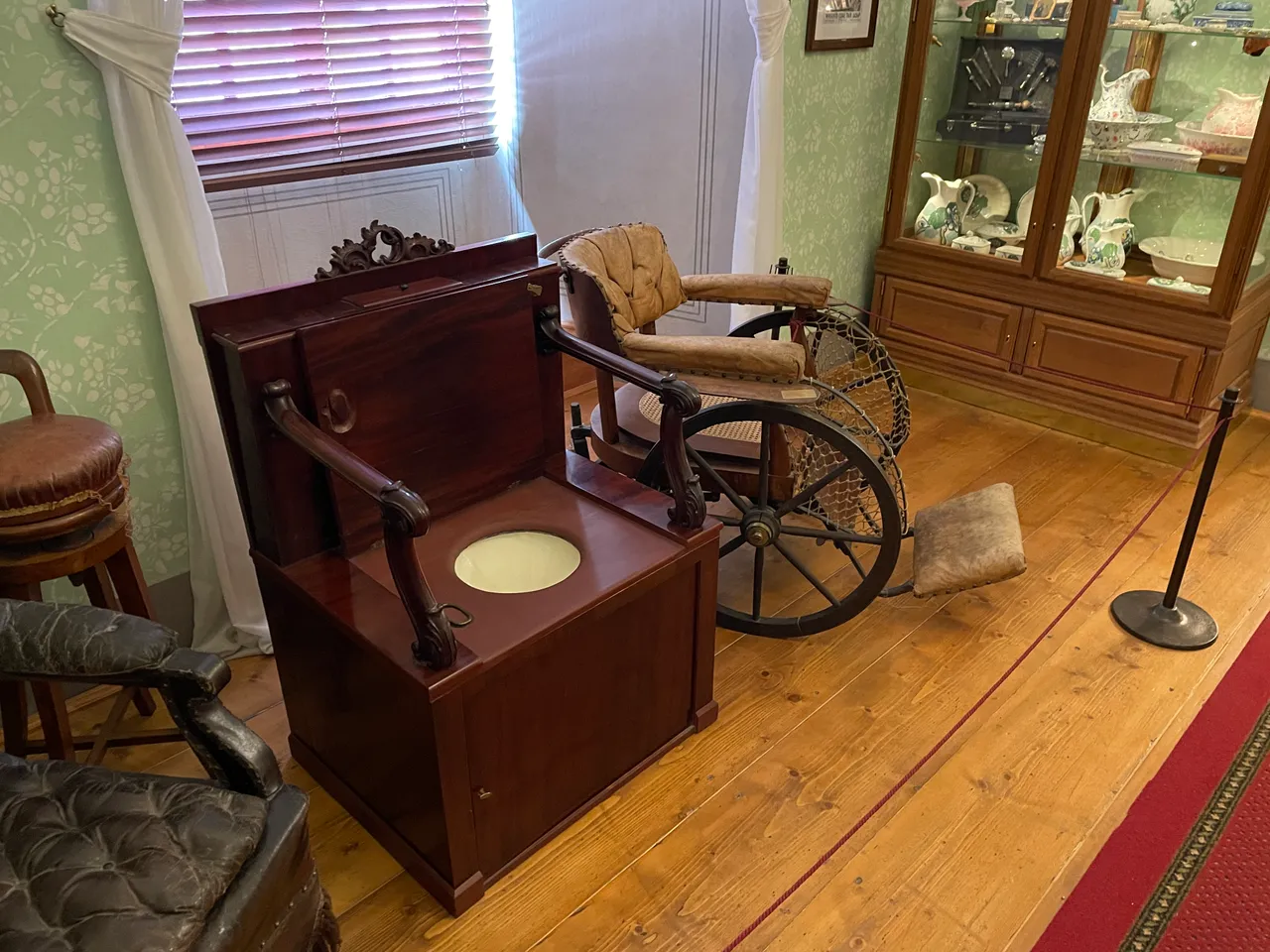
Here’s the most eerie exhibit in the museum: a glass coffin containing St. Reparat. Displaying the skeleton of a town's patron saint isn’t too creepy, you might think? Well, this saint is more like a jigsaw puzzle than a cohesive skeleton – recent research has revealed that his body is actually composed of bones from three different people. Assembling a saint from random bones is a rather peculiar hobby to me!
A tady je nejpodivnější exponát celého muzea - skleněná rakev s ostatky Sv. Reparata, patrona města. Na tom by asi nebylo nic extra divného vzhledem k obsesi ostatky svatých, kterou trpí některé církve. Ale nedávný výzkum ukázal, že to nejsou ani tak ostatky světce jako spíš stavebnice. Kostra je složená ze tří různých lidí. Podivný koníček.
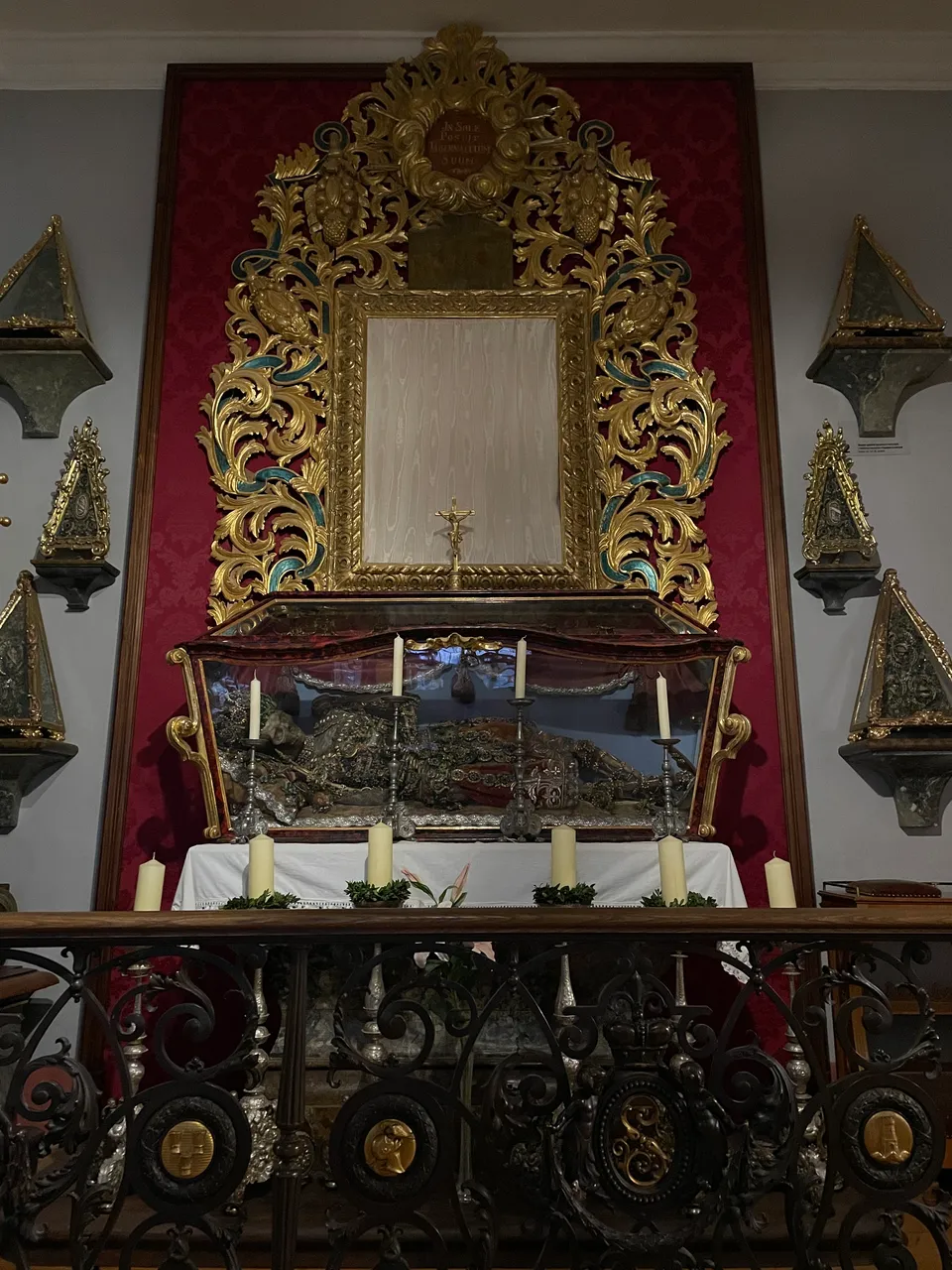
See you next time! I'll take you around the town (or to the Aviation Museum in Kbely, we'll see yet).